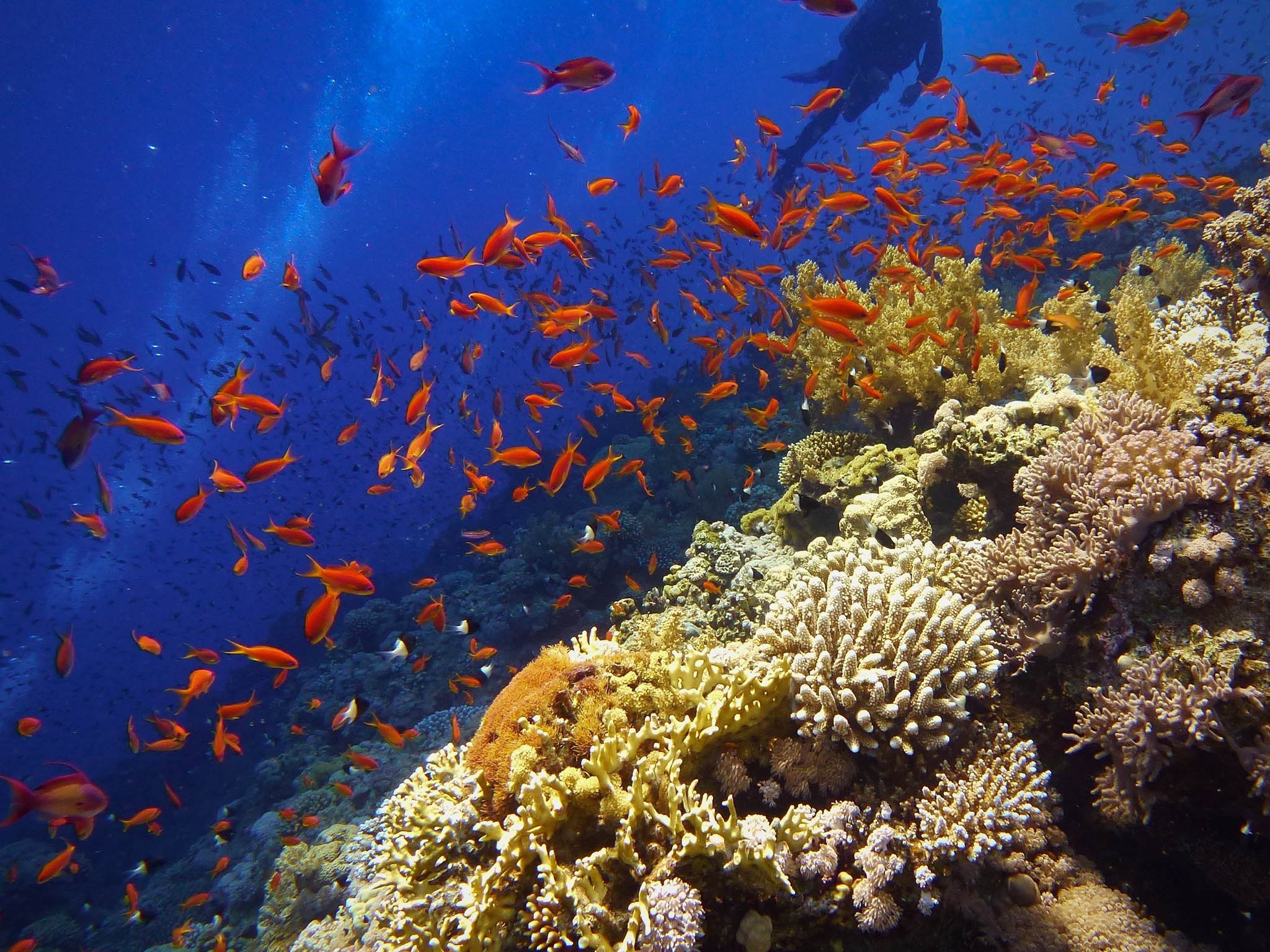How climate change is making it harder to monitor marine pollution
The warming of the oceans means that the plants and organisms used as warning systems for pollution are being rendered ineffective

Your support helps us to tell the story
From reproductive rights to climate change to Big Tech, The Independent is on the ground when the story is developing. Whether it's investigating the financials of Elon Musk's pro-Trump PAC or producing our latest documentary, 'The A Word', which shines a light on the American women fighting for reproductive rights, we know how important it is to parse out the facts from the messaging.
At such a critical moment in US history, we need reporters on the ground. Your donation allows us to keep sending journalists to speak to both sides of the story.
The Independent is trusted by Americans across the entire political spectrum. And unlike many other quality news outlets, we choose not to lock Americans out of our reporting and analysis with paywalls. We believe quality journalism should be available to everyone, paid for by those who can afford it.
Your support makes all the difference.Despite the dramatic news coverage of oil spills and other big pollution disasters in our seas and oceans, most environmental pollution is caused by much smaller incidents that are often invisible, persistent, and far more difficult to track.
While animals and plants caught up in these disasters are easily identified as stressed or physically affected by the pollution, with smaller incidents organisms might look and behave perfectly normal. Only over time does the chronic exposure to low-level pollution take its toll.
By the time this becomes obvious, often it is too late to do anything to save a particular population, whose decline might have knock-on effects on the surrounding environment, often with socio-economic consequences.
So there is not only a moral responsibility to look after the environment, but also a strong financial incentive, because many jobs and livelihoods depend on a healthy environment and its ecosystems.
Biomarker tools
Biomarkers of exposure provide a tool to identify pollution events early on, often at levels that are not detectable by conventional methods. Loosely defined as measurable effects (endpoints) in organisms, providing evidence of exposure to pollutants, biomarkers lead to establishing the cause and giving the necessary data to inform any policy decisions that need to be taken.
Such biomarkers exist in a number of biological areas. They can be purely biochemical, manifesting themselves as damages to DNA, alterations to the activity of enzymes involved in metabolism, structural damage to cells and their subsequent ability to perform properly, as well as more obvious pathological, reproductive or behavioural disorders. However, this requires intimate knowledge of the species and the relevant environmental variables, including how these may influence the respective biomarkers.
The latest Intergovernmental Panel on Climate Change (IPCC) reports on climate change show that the upper 75 metres of the world’s oceans have been warming at a rate of 0.11°C per decade since at least 1971 and the uptake of CO2 caused by human pollution has depressed pH (acidity level) by -0.0014 to -0.0024 per year, and is predicted to continue.
Effects of climate change
These changes are likely to affect biomarkers on three levels. First of all, commonly used organisms may no longer be available, as they migrate further north in search of cooler water. And they may then be replaced by invasive species from warmer waters that are not as sensitive to pollution and therefore not as useful as biomarker organisms. Changing migratory patterns may increase the transport of contaminants in the bodies of organisms in significant quantities to other, previously clean locations, in some cases even becoming more important than wind or water driven methods.
Second, the fate and behaviour of contaminants in the environment, particularly their persistence, their ability to be taken up by organisms and how they behave once absorbed, is strongly driven by environmental factors such as salinity, pH and temperature – and these are all subject to change under climate change scenarios. This means, organisms may be more or less susceptible to pollutants; the degree of change will depend on the specific pollutants and the organism species involved.
Last of all, organisms unable to migrate will experience increased stress owing to changes in temperature, salinity and pH which may mean they may no longer be sensitive enough for the biomarker task.
A major focus of research in my lab is working towards re-evaluating these biomarkers in several mainstream organisms and assessing the potential of new, better-adapted organisms. The main aim of this work is to future proof our tools for detecting pollution in the marine environment in order to maintain the ecosystem we all depend on.
The evidence for climate change driven by pollution caused by humans is overwhelming and it is clear it is affecting the marine environment. As a result, some commonly used biomarker species and endpoints may need to be re-evaluated and adapted for this changing environment if they are to be used in future as early warning systems for pollution.
Mark Hartl is associate professor of marine biology and director of centre for marine biodiversity and biotechnology, Heriot-Watt University. This article first appeared on TheConversation.com
Join our commenting forum
Join thought-provoking conversations, follow other Independent readers and see their replies
Comments